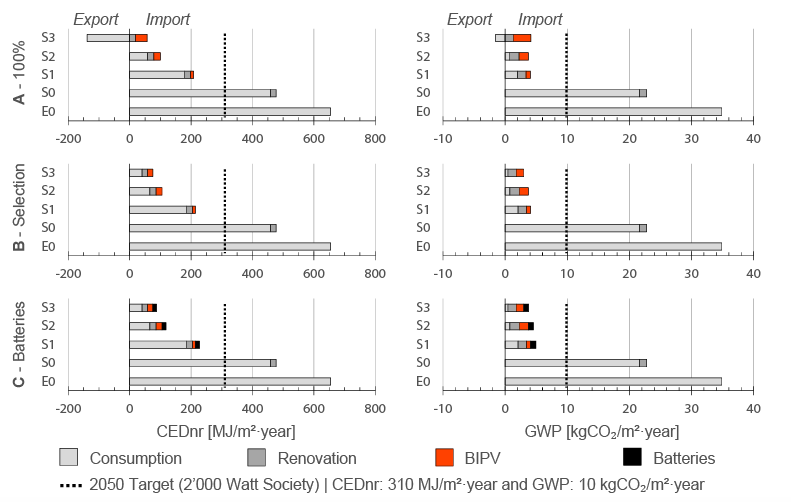What is the energy performance of BIPV at building level?
After the life-cycle analysis (LCA) at component level [cf. sheet 3.2], we now focus on the environmental impact of an active renovation project at building scale.

Life cycle analysis (LCA) is a well-known method to evaluate the potential environmental impacts of products and services and their resource consumption. This method is used in particular in the building sector, where it is a crucial part of the assessment of sustainable buildings, considering the energy consumption and emissions due to the use of the building (e.g. heating) but also the due to the construction material fabrication (e.g. concrete, wood, BIPV element) [1].
This sheet presents an in-depth LCA study of a renovation project with BIPV installation on Archetype 4, a building from the 70s. Fig. 1 presents the results of the LCA regarding the whole renovation project including BIPV strategies and the replacement of the exiting oil-boiler by an electric heat pump. In addition, we propose three comparative energy-use scenarios related to the sizing of the BIPV installation and the implementation of storage systems. Results are presented as follows:
- A-100% takes into account the activation of 100% of the possible surfaces detected during the implementation of each renovation scenario [cf. sheet 2.3].
- B-Selection takes into account a selection of active surfaces that allow an equilibrium between self-consumption and self-sufficiency, resulting in a better adapted installation according to the demand of the building. The rest of the possible active surface will present the same visually but without PV cells.
- C-Batteries takes into account the selection criteria from B-Selection and adds a battery system in order to increase self-consumption and self-sufficiency potential.



